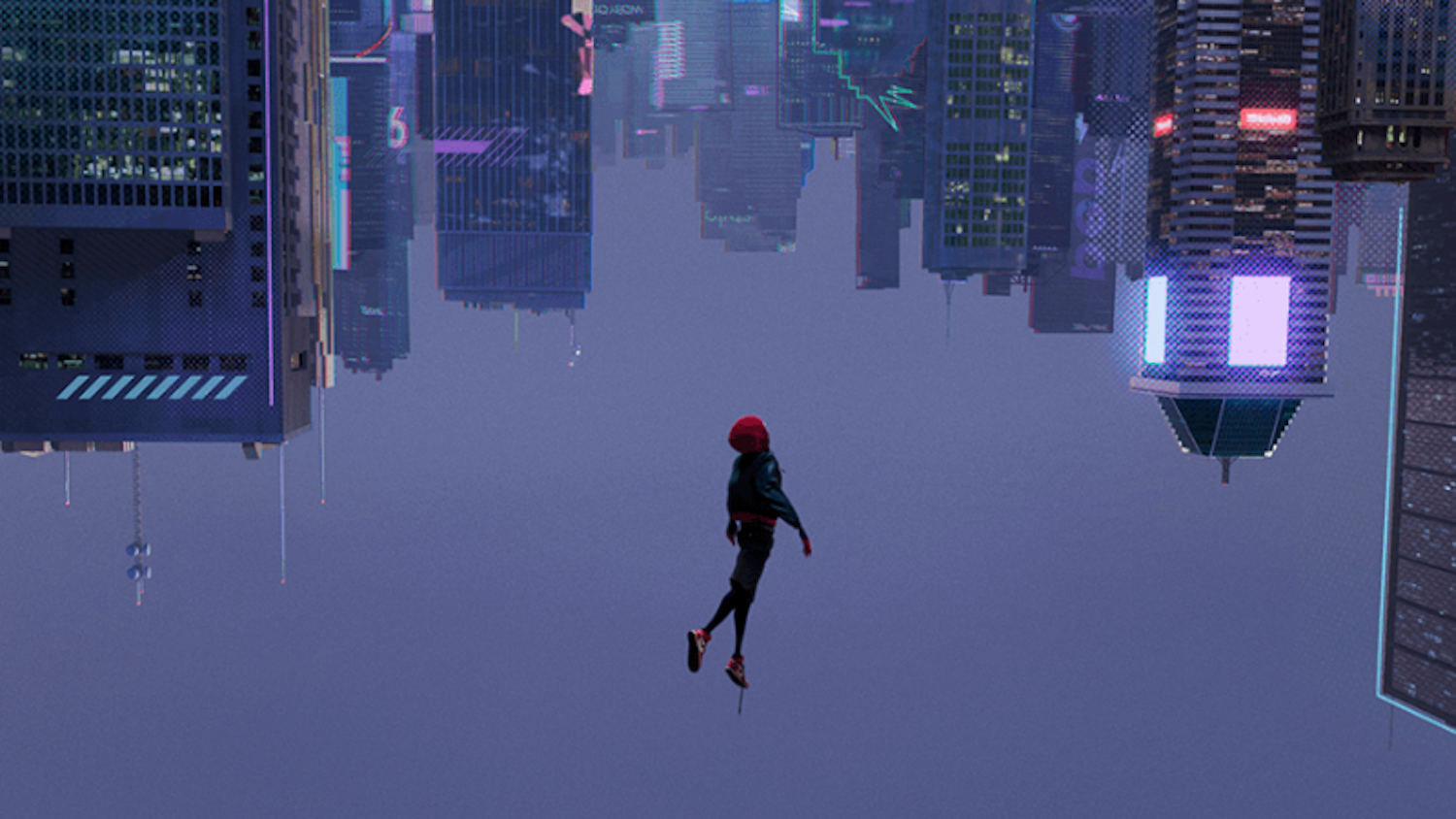Spider-Man: Into the Spider-Verse is a Golden Globe award-winning animated feature film that you need to go see right now. If your plans for tonight were to do homework, save that for tomorrow. This film will change the way animated films look and feel forever.
Into the Spider-Verse features Miles Morales (Shameik Moore) as he inherits the mantle of Spider-Man to save his universe from collapsing. Miles Morales was originally created by writer Brian Bendis and artist Sara Pichelli in 2011. The film provides an alternative (and possibly better) version of Morales’ origin story, blending it with the Edge of Spider-Verse comic event from 2014. It swaps out villains and streamlines both stories while still sticking to its basic framework.
Into the Spider-Verse draws from diverse incarnations of Spider-Man, including the hard-boiled 1930s detective Spider-Man Noir (Nicholas Cage), vaguely anime-styled Peni Parker (Kimiko Glenn) and her hyper-intelligent spider companion, the ‘60s-cartoon-style agent of chaos Spider-Ham (John Mulaney), teenage Gwen Stacy (Hailee Stenfeld) from the recent Spider-Gwen comics, as well as a reluctant mentor and role model to Morales who is original to this movie, Peter B. Parker (Jake Johnson). This diversity is important not just because it provides more representation for people of colour, but also because it makes the multiverse aspect more apparent by contrasting these vastly different incarnations of the same character against each other.
Each character also brings their own art style to Morales’ universe, which creates an eldritch and otherworldly feeling that emphasizes how different the meta-origins are for the Spider-Humans. However, the most praised aspect of Into the Spider-Verse is its innovative art style that mimics the mis-registered layers of colour and dot matrix printing that is the hallmark of cheaply printed weekly comics. It also successfully translates the visual representation of sound effects to animation without feeling like a 1960s cartoon, even when Spider-Pig is doing Spider-Pig things. Tiny words appear next to leaves bouncing and hair flips as it would on the page, with a motion that accentuates the movement of characters or objects. In one scene, the films treats the screen as a comic-book page, building up panels and text-based narration to convey Morales’ inner thoughts and feelings. All of these small things add up to make Into the Spider-Verse something that will be discussed by animation studios and students for years to come.
The writing in the film is also excellent. The plot is entertaining and there is no filler or wasted time. There are definitely jokes and gags, but they’re never mistimed and often add needed levity to serious scenes. Morales’ origin story would be very heavy if the writers didn’t consciously take the time to add a gag or punchline into the drama. The expert balance between gags and plot beats makes this film a smooth ride that is excellent for all ages. Children will appreciate the comedy and jokes, and adults will appreciate the serious family drama.
If you’re looking for a break from the mundane, you should see Spider-Man: Into the Spider-Verse as soon as possible.


